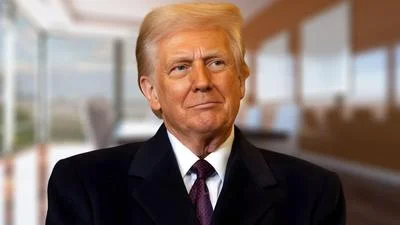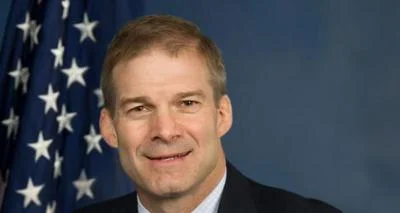The Congressional Record is a unique source of public documentation. It started in 1873, documenting nearly all the major and minor policies being discussed and debated.
“LONG BRIDGE ACT OF 2020” mentioning the U.S. Dept. of Transportation was published in the House of Representatives section on pages H7125-H7126 on Dec. 10, 2020.
The Department handles nearly all infrastructure crisscrossing the country. Downsizing the Federal Government, a project aimed at lowering taxes and boosting federal efficiency, said the Department should be privatized to save money, reduce congestion and spur innovation.
The publication is reproduced in full below:
LONG BRIDGE ACT OF 2020
Mr. HUFFMAN. Mr. Speaker, I move to suspend the rules and pass the bill (H.R. 7489) to authorize the Secretary of the Interior to convey to the Commonwealth of Virginia or the District of Columbia certain Federal land under the administrative jurisdiction of the National Park Service for the construction of rail and other infrastructure, and for other purposes, as amended.
The Clerk read the title of the bill.
The text of the bill is as follows:
H.R. 7489
Be it enacted by the Senate and House of Representatives of the United States of America in Congress assembled,
SECTION 1. SHORT TITLE.
This Act may be cited as the ``Long Bridge Act of 2020''.
SEC. 2. AUTHORIZATION OF CONVEYANCES.
(a) Conveyances Authorized.--On request of the Commonwealth of Virginia or the District of Columbia, as applicable, the Secretary of the Interior may, subject to any terms and conditions that the Secretary determines to be necessary, convey to the Commonwealth of Virginia or the District of Columbia, as applicable, any Federal land or interest in Federal land under the jurisdiction of the Secretary that is identified by the Commonwealth of Virginia or the District of Columbia, as applicable, as necessary for the Long Bridge Project.
(b) Reversion.--If any portion of the Federal land or interest in Federal land conveyed under subsection (a) is no longer being used for railroad purposes or recreational use, title to the portion of the Federal land or interest in the portion of the Federal land shall revert to the Secretary, on a determination by the Secretary that the portion of the Federal land has been remediated and restored to a condition determined to be satisfactory by the Secretary.
(c) Temporary Use.--The Secretary may allow the temporary use of any Federal land under the jurisdiction of the Secretary that is identified by the Commonwealth of Virginia or the District of Columbia, as applicable, as necessary for the construction of the Long Bridge Project, subject to any terms and conditions determined to be necessary by the Secretary.
(d) Recovery of Costs.--Notwithstanding any other provision of law, the Secretary may recover from the Commonwealth of Virginia or the District of Columbia, as applicable, all costs incurred by the Secretary in providing or procuring necessary services associated with a conveyance under subsection (a) or use authorized under subsection (c).
(e) Definitions.--In this section:
(1) Long bridge project.--The term ``Long Bridge Project'' means the project consisting of improvements to the Long Bridge and related railroad infrastructure between Rossyln
(RO) Interlocking in Arlington, Virginia, and L'Enfant (LE) Interlocking near 10th Street SW in the District of Columbia, the purpose of which is to expand commuter and regional passenger rail service and provide bicycle and pedestrian access crossings over the Potomac River.
(2) Secretary.--The term ``Secretary'' means the Secretary of the Interior, acting through the Director of the National Park Service.
SEC. 3. DETERMINATION OF BUDGETARY EFFECTS.
The budgetary effects of this Act, for the purpose of complying with the Statutory Pay-As-You-Go Act of 2010, shall be determined by reference to the latest statement titled
``Budgetary Effects of PAYGO Legislation'' for this Act, submitted for printing in the Congressional Record by the Chairman of the House Budget Committee, provided that such statement has been submitted prior to the vote on passage.
The SPEAKER pro tempore. Pursuant to the rule, the gentleman from California (Mr. Huffman) and the gentleman from Colorado (Mr. Lamborn) each will control 20 minutes.
The Chair recognizes the gentleman from California.
General Leave
Mr. HUFFMAN. Mr. Speaker, I ask unanimous consent that all Members may have 5 legislative days in which to revise and extend their remarks and to include extraneous material on the measure under consideration.
The SPEAKER pro tempore. Is there objection to the request of the gentleman from California?
There was no objection.
Mr. HUFFMAN. Mr. Speaker, I yield myself such time as I may consume.
Mr. Speaker, I rise in support of H.R. 7489, the Long Bridge Act, introduced by our colleague, Representative Wittman, from Virginia.
This bill is a simple piece of legislation, but it is important. It authorizes the National Park Service to convey select parcels of land to the Commonwealth of Virginia or the District of Columbia in order to facilitate updates to the Long Bridge, a critical commuter and freight rail corridor in the Washington, D.C., metropolitan area.
{time} 1015
The existing bridge, which is used by Amtrak, the Virginia Railway Express, and CSX Transportation was built all the way back in 1904. It has not been substantially upgraded since 1942.
The current project is a partnership between the U.S. Department of Transportation, the Virginia Department of Rail and Transportation, and the District of Columbia, and it will double capacity of the bridge by constructing a second bridge alongside the existing structure.
Allowing the National Park Service to convey small tracts of land will facilitate completion of this very important upgrade.
To be clear, we are not talking about land that includes historic resources, open space, or park-like qualities.
The agency has final say in what can be transferred, and the bill includes important safeguards to ensure that the land identified for conveyance is used only for railroad purposes.
This project is a priority for this region, and I am happy to lend my support to this commonsense, bipartisan solution.
Mr. Speaker, I reserve the balance of my time.
Mr. LAMBORN. Mr. Speaker, I yield myself such time as I may consume.
H.R. 7489, offered by our Natural Resources Committee colleague from Virginia, Mr. Wittman, authorizes the Secretary of the Interior to convey about 4.4 acres of Federal property for the construction of a new commuter rail and pedestrian bridge spanning the Potomac.
Current law allows a right of way for railroads on most Federal lands, but not for railroads on National Park Service lands, therefore, legislation is needed to authorize a small amount of National Park System land to be conveyed or used by Virginia to construct a railroad.
The Long Bridge Project will double the capacity of the Potomac River rail crossing by adding a second two-track bridge adjacent to the existing bridge, as well as a pedestrian crossing.
I commend Representative Wittman for his hard work on the Long Bridge Project and for this bipartisan and tri-jurisdiction legislation.
Mr. Speaker, I urge adoption of the measure, and I reserve the balance of my time.
Mr. HUFFMAN. Mr. Speaker, I yield such time as he may consume to the gentleman from Virginia (Mr. Beyer).
Mr. BEYER. Mr. Speaker, I thank the gentleman for yielding.
Today I rise in support of the Long Bridge Act of 2020, which I proudly colead with my colleague from Virginia, Congressman Rob Wittman.
The existing Long Bridge is the only rail bridge connecting Virginia to Washington, D.C., and it is the main rail connection between the southeast and northeast for both passenger and freight rail.
The Long Bridge is old and rusty and ugly and a treasured part of our landscape. It was authorized by Congress in 1808 and signed into law by President Thomas Jefferson. It cost $200,000 to build initially.
Now, during peak hours, the two-track bridge is at almost 98 percent capacity, which makes it a significant chokepoint along the East Coast from Washington, D.C., all the way to Florida.
That is why the Long Bridge Project is so crucial. It would double the capacity of the Potomac River rail crossing by adding a second two-
track bridge adjacent to the existing bridge.
Mr. Speaker, I cannot stress how impactful the new Long Bridge Project will be, projecting an annual $6 billion in benefits to the region by 2040.
However, the land where construction will take place on both sides of the Potomac River is controlled by the National Park Service, and it is currently prohibited by law to transfer land to the Commonwealth of Virginia and the District of Columbia for the purposes of railroad construction.
That is where our bill comes in.
The Long Bridge Act of 2020 is a simple fix to allow the National Park Service to transfer control of this land for the purpose of the Long Bridge rail project.
So I wholeheartedly support this bill. This will enable the Commonwealth of Virginia to move forward with this vital construction.
I thank my colleagues from Virginia, D.C., and Maryland on both sides of the aisle for supporting this bill. And I thank, again, my colleague, Rob Wittman, for his efforts on behalf of the Long Bridge Act of 2020.
Mr. LAMBORN. Mr. Speaker, I yield such time as he may consume to the gentleman from Virginia (Mr. Wittman).
Mr. WITTMAN. Mr. Speaker, I thank Chairman Huffman, Ranking Member Lamborn, and my colleague, Representative Don Beyer for the united effort to make sure that we get this Long Bridge bill passed, to make sure we get a new Long Bridge built, because we know that this is critically important, not just for Virginia, for the District, and for Maryland, but for the Nation because of the critical link point that it is for transportation.
As we know, this is in some ways looked at as a regional project, but it is actually more than that.
The First District of Virginia, the district that I represent, spans the I-95 corridor in Northern Virginia, which includes one of the worst traffic hot spots in the Nation. That is undeniable. In fact, who knows it better than Members here in Congress what they have to deal with each day in their commute.
As a daily commuter myself, I understand the frustration that folks have. This is going to be a critical point for us to be able to use rail as a very efficient means by which to move people and to move commerce throughout the region. Incredibly important. And with passage of this bill, Congress is providing the adequate resources to leverage the Commonwealth's investment to address issues on I-95.
It has been a great cooperative agreement between the Commonwealth of Virginia and CSX, who owns the line, to make sure that this gets done. It is really unprecedented in what they have agreed to, and it is not just this line, but it is also all the connectors. So this is a great step to really enhance our rail system, which we know is incredibly important to address transportation issues, not just across the eastern seaboard but really across the Nation.
An important component of this in reducing traffic congestion in this region, as I said, is commuter rail. And this bridge spans the Potomac, one of those chokepoints, the major chokepoint here on the eastern seaboard.
It is very heavily traveled. There has to be a balance between transit from a commuter standpoint, passenger rail, and freight rail. And many times there is a battle back and forth, and, unfortunately, freight rail prevails in that since freight companies own the rail. We want to make sure that there is balance there, and this provides a balance.
And I have to give CSX credit for coming to the table and saying, listen, we understand how incredibly important passenger rail is. Even though that is not within their purview, they do see how important that is. So it is a real testament to a lot of different entities coming together to make this work.
And just as Representative Beyer said, the existing bridge is at 98 percent capacity during peak hours, and is used by both VRE, the Virginia Railway Express, Amtrak, and CSX. There is a lot of traffic coming across that bridge; we want to make sure that it can all be accommodated.
We know the proposed design for a new track bridge upstream of the current Long Bridge and five additional bridges in Virginia and D.C. provide those connectors and conduits that we need for the region.
The bill authorizes the Secretary of the Interior, through the National Park Service director, to convey to and authorize the use by both Virginia and D.C. to be able to utilize a small section of National Park Service land for the construction of the new Long Bridge structure for rail and for an additional, as we have heard, walkable and bikeable pedestrian bridge spanning the Potomac River; incredibly important for the region.
The bill will also convey title and interest to Virginia of about 4.4 permanent acres of National Park Service land for the express purpose of this project.
The National Park Service will authorize Virginia to temporarily use 8.4 acres of land for the construction which reverts back to the National Park Service at the discretion of the NPS director when the project gets completed. So it is essentially construction use while equipment is there, but then it reverts back to the National Park Service.
This project supports projected increases in passenger and freight rail through this corridor, not only now but in the future, and it also enhances economic growth and mobility for the region.
It increases the capacity of the rail network for many areas, including the Port of Virginia, which handles 37 percent of goods that move in and out of that port by rail; a great enhancer.
The Port of Virginia will need to increase that share to 45 percent by 2040 to handle a threefold increase in shipments. This will help them do that.
Building a new Long Bridge doubles the rail capacity at this major bottleneck and is incredibly important for the eastern seaboard but also regionally, for not only Virginia and the District, but also, Maryland; so all incredibly important.
The legislation is a significant milestone in transforming passenger and freight rail service along the East Coast and really making a significant step forward in increasing the capacity and opportunity for freight rail.
The construction is a project of major national significance in unlocking the gridlock in this region and is incredibly important.
Finally, I want to thank again the leadership on the Natural Resources Committee, Chairman Huffman, Ranking Member Lamborn, and my colleague Don Beyer for coleading this effort and also Representative Holmes Norton and the rest of the members of the regional delegations and staff for making this important element work.
I also thank Senators Mark Warner and Tim Kaine for introducing the Senate companion bill over on the Senate side.
Mr. Speaker, I urge my colleagues to support this legislation.
Mr. HUFFMAN. Mr. Speaker, I have no further witnesses, and I yield back the balance of my time.
Mr. LAMBORN. Mr. Speaker, I yield back the balance of my time.
The SPEAKER pro tempore. The question is on the motion offered by the gentleman from California (Mr. Huffman) that the House suspend the rules and pass the bill, H.R. 7489, as amended.
The question was taken; and (two-thirds being in the affirmative) the rules were suspended and the bill, as amended, was passed.
A motion to reconsider was laid on the table.
____________________








